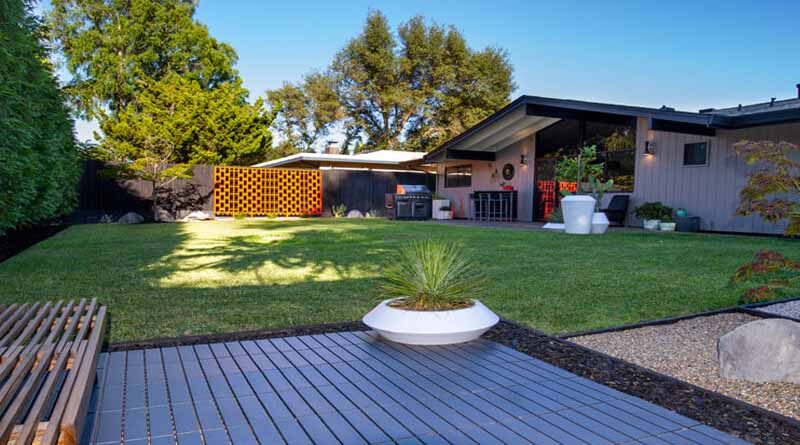Best Ways to Manage a Garden at a Small Space
Thinking about doing some gardening? We’ve written a blog that will help you do it with style. Whether you’re planning on planting a new garden, redesigning your existing one, or if you just want to spruce up the look of your backyard, we have everything you need to know in this blog post.
1. The first step to renovating your garden is to decide what you want it to look like
The first step to renovating your garden is to decide what you want it to look like. This may sound like a simple task but it needs to be done carefully, especially if you’re a beginner. Take some time to think about the style of your home, the type of plants you want to grow, and the size of your garden.
Some ideas to consider are a rustic look, a cozy holiday destination, or a relaxed, festival atmosphere. Some common garden-style themes include containers, veining, herbs, or succulents. It is wise to start with fewer plants than you think you will need. Choose the small, well-established plants that will thrive here in your home and have that many.
Remember to plant these plants in the soil you’ll be using for your other plants. The soil should be slightly loamy and slightly moist, but not overly wet, as this can damage the roots of your plants. What sort of soil do I use? Well, you’re not looking to make giant pots of soil. Use the recommended potting soil for your plants, whether it’s cork bark, vermiculite, bee straw, or peat moss. What about plants that need deeper water? While it’s good to have plants that require more watering than others, don’t forget to follow the water requirements of your soil. One plant can need more watering than another.
If you’re a beginner, you may want to decide on a larger space for your garden before you start working on the interior design of your space. So plant your first batch of succulents in medium-sized planters. These plants need watering only once every two weeks, which should not be too much, especially if you always keep your plants watered. If you’re growing more than one kind of succulent, use the smallest container for those plants. Plant your indoor plants in pots that are 2 to 3 times the size of the container you plan to use for your outdoor plants. While it is not necessary to water your plants weekly or even every day, it is better for your plants to have a quality, consistent soilless drip.
2. Consider the size of your garden and what your needs are
When planning your garden, consider the size of your garden and what your needs are. If you want a place to sit and relax, then you will need a different garden for someone who wants to grow fruit and vegetables. Also, check your garden is in a good location and is well-drained. Choose an area that’s quiet and uncrowned.
Ideally, you would want an area of no more than 200 feet square. When in doubt, choose a spot that’s been regularly used for recreation or even for food storage. Dark areas are preferred and should be protected from the excessive afternoon sun. You don’t want to plant your seedlings or small plants in an area that gets a lot of direct sunlight. The soil should also be kept evenly wet for the seedlings to germinate, which will not only help with starting their roots but also help with the development of their leaves and fruit.
Your garden should be diverse. Different kinds of plants, herbs, and vegetables can all thrive in different places. You can do a simple garden tuck-and-run or, if you have the space, consider trying a better and more elaborate garden — or even a garden-at-home.
If you have a backyard, you can put up some raised beds, and you can put up some garden furniture around the corner. Alternatively, you could put up some high-power lights and have a “show stopper” there. For a place where you can grow fruit, you could grow some garden orchards, which can be a great addition to your home. For a more elaborate garden, you can put up some planters or planter boxes. That way, you can create rows with individual containers to support your plants. You can even create what’s known as a “growing wall” that will help hold up your plants. Keep your garden additions a few feet away from outdoor patios, patios with a balcony that provides direct sunlight, or, in this case, a backyard with water. Watering should be done when the soil is dry but not wet.
3. You should also think about the layout of your garden, including where you want pathways laid out
The layout of your garden, including where you want pathways laid out, will depend on what you want to use your garden for. In our case, we usually plant herbs, fruits, and vegetables, then do small patches of our meat as we see fit. There are several species of herbs we grew and will talk more about in future posts, so stay tuned. This post is divided into five sections. The first is about our garden and what we did with it. The second is about growing herbs, fruits, and vegetables. The third is about the meat patches and a quick recap of what we did to make it look like home.
Planning every aspect of your garden What we learned growing and eating meat Doing work around the garden Here’s how to clean your space How to harvest herbs How to harvest food quite conveniently How to harvest the flavors of your herbs How to use different herbs Possible future posts on herb gardening and/or cultivating Home gardening What we learned growing and eating meat Advanced gardening The meat patches Plan for your garden Alternative methods of shopping for fruits and vegetables Finding local produce/prepared food near you Top video recipe of the week Ramps Plan for where to plant Roses Vertical cowshed How to pick roses A ten step guide on growing roses How much to plant Roses and their care Soil vs.
4. This will help determine where you want to place plants, whether they’re in pots or in the soil
When deciding where to place plants in your garden, consider whether you want to place pots or plants in the soil. If you’re placing plants in the soil, then you need to take into account the amount of sunlight and water the plants will receive. Get a Shed structure for those plants which need some shelter space. You can use your Metal Garages or Carports for shade or shelter.
Garden and Landscape Management While tomatoes take about four months to mature indoors, garden pea plants can take from a few weeks to a month or more. These plants are much more forgiving than other plants because they tolerate temperatures down as low as 20 degrees Fahrenheit. During the summer months, these plants can go all day without needing watering and will survive freezing temperatures. However, once temperatures soar past 50 degrees Fahrenheit, this kind of plant could not survive in parts of the country. Finally, during the winter when temperatures plummet, the plants can go dormant and never wake up. This results in little energy spent doing anything. If you’ve got the space and the patience, then you should definitely give garden pea a try.
These are indoor systems that use water-based nutrients that can be delivered to the plants through a drip system. Crops must be watered every day with a product that contains a decent amount of dissolved solids, to encourage better growth. This type of system requires some effort from growers because they have to regulate and monitor water volumes. When it comes to growing food for your pets, hydroponics also isn’t a great choice because it requires heavy use of both space and energy. — Garden and Landscape Management Before winter comes, the decision to plant food for the following spring is important. Picking a variety of fruits, vegetables, and herbs for this year can improve your garden’s flavor and reduce your reliance on pesticides.
5. When it comes to watering, drip irrigation is a great way to ensure that water isn’t wasted but still reaches the right places
When it comes to watering your plants, one of the best ways to water them is to control the flow of water with drip irrigation. Drip irrigation allows you to water your plants more efficiently, which will save you time and money.
This article is an easy-to-follow how-to — instruction on how you can water your plants and bushes so that they do “sponge” back to a lush green state without having to spend any time on watering often. Irrigating your plants and bushes properly will help them benefit from sunlight and water without taking a strip of water from their supplies.
The lawn that you may have been trying to maintain will seem less green when you replace it with a garden that thrives on rain. If you want your yard to look a little more like the pictures above, you need to repurpose those older soccer-field-looking grasses. Whether you use a spade or your hands to pull old grass clippings into a new planter, the best way to do this is by using drip irrigation.
Once you learn how to repurpose these grasses and start watering your garden with drip irrigation, you’ll automatically be watering your plants and your yard the way it needs it. Just in case you needed more encouragement to look forward to wearing cozy, warm clothes when you get home from your day job, find comfort in the fact that you’re starting to reduce your carbon footprint. With no additional money needed (and going up in price) to outsource winterization, you can invest in your own personal wrap-around de-sooner.




